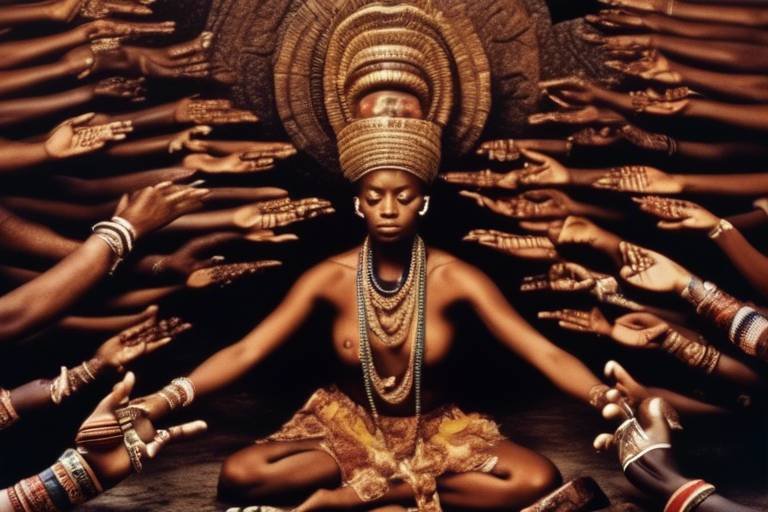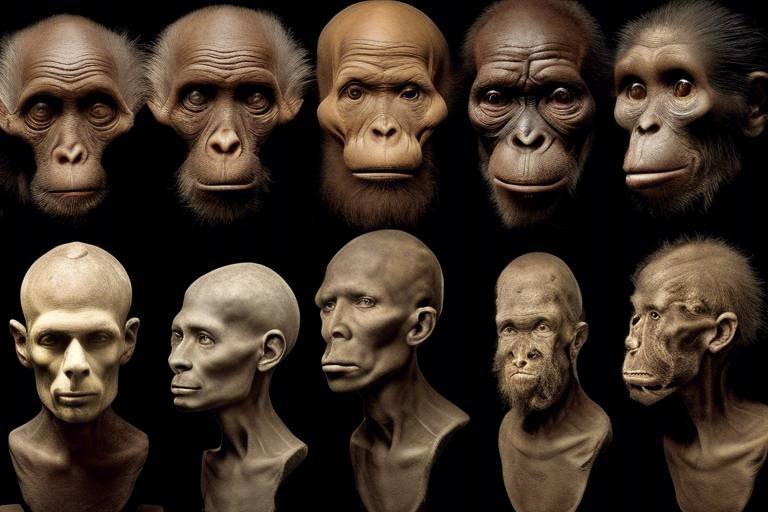Distinguishing Between Pleasure and Happiness - A Consciousness Perspective
In our fast-paced world, it’s easy to confuse pleasure with happiness. Both are integral to our experience of life, yet they serve different purposes and evoke distinct feelings. While pleasure is often fleeting, a brief spark of joy that can come from indulging in a favorite dessert or binge-watching a show, happiness is a more profound and enduring state. It encompasses a sense of fulfillment and purpose that transcends momentary delights. Understanding these differences is crucial for enhancing our consciousness and overall well-being.
Imagine pleasure as a firework—bright, loud, and exciting, but gone in an instant. In contrast, happiness is like a warm, steady flame, providing light and warmth over time. By exploring the nuanced differences between these two experiences, we can make more informed choices that lead to a richer, more meaningful life. This article will take you on a journey through the realms of pleasure and happiness, offering insights into how they affect our consciousness, decision-making, and ultimately, our well-being.
So, what is it that makes pleasure so enticing? Is it the immediate gratification we seek, or is there something deeper at play? As we delve into the nature of pleasure, we’ll uncover its sources and examine how it impacts our consciousness. On the flip side, we’ll explore the essence of happiness, including the components that contribute to a fulfilling life. By the end of this article, you’ll have a clearer understanding of how to navigate the delicate balance between pleasure and happiness, ensuring that your choices lead to a more satisfying existence.
Pleasure is often seen as a fleeting sensation tied to immediate gratification. It can come from various sources, such as food, entertainment, or even material possessions. These experiences evoke a rush of dopamine, the feel-good neurotransmitter that temporarily elevates our mood. However, this high is often short-lived, leaving us craving more to maintain that feeling.
In our quest for pleasure, we may find ourselves making decisions that prioritize short-term satisfaction over long-term well-being. For instance, indulging in junk food may provide a moment of bliss, but the subsequent guilt and health consequences can overshadow that fleeting joy. This cycle of seeking pleasure can create a rollercoaster of emotions, leading to a constant chase for the next high, often at the expense of our mental health.
Happiness, on the other hand, is a deeper, more enduring state of well-being. It’s not just about feeling good in the moment; it’s about cultivating a sense of purpose and fulfillment in life. Happiness often stems from meaningful relationships, personal achievements, and a sense of belonging. It’s about the connections we forge with others and the impact we have on the world around us.
To illustrate the difference, consider the following table that compares the characteristics of pleasure and happiness:
| Aspect | Pleasure | Happiness |
|---|---|---|
| Duration | Short-lived | Long-lasting |
| Source | External (food, entertainment) | Internal (relationships, purpose) |
| Impact on Well-being | Temporary boost | Overall life satisfaction |
| Focus | Instant gratification | Long-term fulfillment |
Understanding these distinctions can help us prioritize our choices better. By focusing on what truly contributes to our happiness, we can create a life that feels rich and fulfilling, rather than one that is merely filled with fleeting pleasures.
When we talk about satisfaction, it’s essential to differentiate between short-term and long-term fulfillment. Short-term pleasures might give us a quick boost, but they often leave us feeling empty afterward. Long-term happiness, however, builds a foundation for a fulfilling life. It’s like planting a tree; while it takes time to grow, the shade and fruit it provides are well worth the wait.
Mindfulness practices can enhance awareness of the distinction between pleasure and happiness. Techniques such as meditation, deep breathing, and conscious living can help us become more attuned to our feelings and desires. By fostering mindfulness, we can make choices that align more closely with our values and long-term happiness rather than succumbing to the allure of immediate gratification.
Understanding the difference between pleasure and happiness can significantly influence our choices. When we prioritize happiness over transient pleasures, we tend to make healthier decisions that promote our well-being. For example, choosing to spend time with loved ones instead of engaging in solitary activities that offer temporary pleasure can lead to deeper connections and lasting joy.
Social relationships play a crucial role in our happiness. Meaningful connections with friends and family contribute to long-term happiness, providing support and a sense of belonging. In contrast, seeking pleasure in isolation can lead to feelings of loneliness and dissatisfaction. It’s essential to nurture these relationships, as they are often the cornerstone of a happy life.
Finding a balance between pleasure and happiness is vital for a fulfilling life. While pleasure can add excitement and joy to our daily routines, it’s essential to ensure that it doesn’t overshadow our pursuit of long-term happiness. By integrating both aspects into our lives, we can create a holistic approach to well-being.
Establishing boundaries can help manage the pursuit of pleasure. By recognizing when we are engaging in activities that are solely for pleasure, we can make more conscious choices that align with our overall happiness. This might mean saying no to certain indulgences or setting limits on how often we engage in pleasurable activities.
To cultivate lasting joy, it’s essential to prioritize activities and mindsets that promote happiness over mere pleasure. This could include pursuing hobbies that bring fulfillment, fostering relationships that provide support, and engaging in activities that align with our values. By focusing on these aspects, we can create a richer life experience that goes beyond the fleeting nature of pleasure.
- What is the main difference between pleasure and happiness?
Pleasure is a short-lived feeling often tied to immediate gratification, while happiness is a deeper, more enduring state of well-being that encompasses fulfillment and purpose. - How can I cultivate more happiness in my life?
Focus on building meaningful relationships, pursuing activities that align with your values, and practicing mindfulness to enhance your awareness of what truly brings you joy. - Is it possible to have too much pleasure?
Yes, an excessive pursuit of pleasure can lead to negative consequences, such as addiction or dissatisfaction. Striking a balance between pleasure and happiness is key.

The Nature of Pleasure
Pleasure is often regarded as a fleeting sensation, a burst of joy that dances on the surface of our consciousness. It's like that first bite of a delicious dessert or the rush of adrenaline during an exciting adventure. But what exactly is pleasure, and how does it weave itself into the fabric of our lives? At its core, pleasure is tied to immediate gratification. It's that quick fix that makes us feel good in the moment, often leading us to chase after experiences that provide instant satisfaction.
Sources of pleasure can be diverse, ranging from sensory experiences, such as taste and touch, to emotional highs derived from achievements or social interactions. For instance, think about the last time you indulged in your favorite meal or laughed with friends. Those moments are filled with pleasure, but they are often short-lived. They provide a spark of happiness that can quickly fade, leaving us yearning for the next hit of joy. This cycle can create a pattern where we continuously seek out new pleasures, sometimes at the expense of deeper, more fulfilling experiences.
Moreover, the pursuit of pleasure can significantly affect our consciousness and decision-making processes. When we prioritize pleasure, we may find ourselves making choices that are not in our long-term best interest. For example, indulging in excessive junk food might bring immediate pleasure, but over time, it could lead to health issues. This highlights the importance of understanding the transient nature of pleasure and how it can sometimes cloud our judgment. To illustrate this, consider the following table:
| Aspect | Pleasure | Happiness |
|---|---|---|
| Duration | Short-lived | Long-lasting |
| Source | Immediate gratification | Meaningful experiences |
| Impact on Decision-Making | Can lead to impulsive choices | Encourages thoughtful decisions |
In summary, while pleasure is an essential aspect of human experience, it is crucial to recognize its limitations. By understanding the nature of pleasure, we can begin to navigate our desires more consciously and make choices that not only bring us joy in the moment but also contribute to our long-term happiness.
- What is the difference between pleasure and happiness? Pleasure is a short-term sensation, while happiness is a deeper, more enduring state of well-being.
- Can pleasure lead to happiness? While pleasure can contribute to happiness, it is not a guaranteed path. True happiness often requires deeper connections and fulfillment.
- How can I find a balance between pleasure and happiness? Focus on integrating activities that provide both immediate joy and long-term satisfaction into your daily routine.

The Essence of Happiness
Happiness is often described as a deep-rooted and enduring state of well-being, contrasting sharply with the fleeting nature of pleasure. While pleasure can be likened to a quick burst of excitement, happiness is more like a warm, steady glow that lingers long after the moment has passed. It encompasses a wide range of experiences that contribute to our overall sense of fulfillment in life. So, what exactly makes happiness so essential to our existence?
At its core, happiness is shaped by various components that intertwine to create a rich tapestry of life satisfaction. These components include personal fulfillment, meaningful relationships, and a sense of purpose. Each of these elements plays a crucial role in defining our happiness and influencing our overall well-being. For instance, personal fulfillment often stems from pursuing passions and interests that resonate with our true selves. When we engage in activities that ignite our enthusiasm, we cultivate a sense of joy that transcends temporary pleasures.
Moreover, the importance of relationships cannot be overstated. Studies consistently show that strong social connections are one of the most significant predictors of happiness. This is because relationships provide us with a support system, a sense of belonging, and opportunities for shared experiences. Think about it: when you reminisce about the happiest moments in your life, how often do they involve friends or family? It's these connections that enrich our lives and contribute to a profound sense of happiness.
Additionally, happiness is often linked to having a clear sense of purpose. When we have goals and aspirations that align with our values, we create a roadmap for our lives that leads to long-term satisfaction. This journey towards achieving our goals can be incredibly fulfilling in itself, providing us with motivation and a reason to wake up excited each day. In essence, happiness is not just about feeling good in the moment; it's about crafting a life that reflects our deepest desires and values.
To further illustrate the essence of happiness, consider the following table that summarizes the key components:
| Component | Description |
|---|---|
| Personal Fulfillment | Pursuing passions and interests that resonate with our true selves. |
| Meaningful Relationships | Building strong social connections that provide support and a sense of belonging. |
| Sense of Purpose | Having goals and aspirations that align with our values, creating a roadmap for our lives. |
In conclusion, understanding the essence of happiness is crucial for anyone seeking a fulfilling life. It requires more than just chasing after fleeting pleasures; it calls for a deeper exploration of what truly brings us joy. By focusing on personal fulfillment, nurturing relationships, and cultivating a sense of purpose, we can create a life that resonates with happiness on a profound level. So, the next time you find yourself in pursuit of happiness, remember that it’s not just about the short-term thrills but about building a rich and meaningful life.
- What is the difference between happiness and pleasure?
Happiness is a long-lasting state of well-being, while pleasure is a short-lived feeling of enjoyment or satisfaction.
- How can I cultivate happiness in my life?
Focus on building meaningful relationships, pursuing your passions, and establishing goals that align with your values.
- Why are relationships important for happiness?
Strong social connections provide support, a sense of belonging, and shared experiences that enhance our overall happiness.

Short-term vs. Long-term Satisfaction
When we talk about satisfaction, it's essential to understand the difference between short-term and long-term satisfaction. Think of short-term satisfaction as a quick sugar rush; it feels great for a moment, but it fades just as quickly, leaving you craving more. This kind of satisfaction often comes from immediate pleasures—like indulging in a decadent dessert, binge-watching your favorite series, or splurging on that trendy gadget. While these experiences can bring a smile to your face, they are often fleeting, leaving you in a cycle of constant seeking.
On the other hand, long-term satisfaction is like planting a tree. It takes time, care, and patience to grow, but once it's established, it provides shade, fruit, and beauty for years to come. Long-term satisfaction stems from deeper, more meaningful experiences—such as nurturing relationships, pursuing personal goals, or engaging in fulfilling work. These elements contribute to a sense of purpose and well-being that transcends the momentary highs of fleeting pleasures.
To illustrate this further, let's look at a comparison table:
| Aspect | Short-term Satisfaction | Long-term Satisfaction |
|---|---|---|
| Duration | Fleeting | Enduring |
| Source | Immediate pleasures | Meaningful experiences |
| Impact on Mood | Temporary boost | Lasting fulfillment |
| Example | Eating junk food | Building lasting friendships |
In essence, while short-term satisfaction can provide a quick pick-me-up, it often leads to a cycle of desire and disappointment. People might chase after the next thrill, only to find themselves back where they started—unfulfilled and looking for the next fix. In contrast, long-term satisfaction builds a solid foundation for a happy and meaningful life. It encourages us to invest time and energy into activities and relationships that genuinely enrich our lives.
So, how do we shift our focus from the quick highs to the more profound joys? It starts with awareness. Recognizing when we are seeking immediate gratification can help us make more conscious choices. Instead of opting for a night of mindless scrolling on social media, we might choose to spend that time connecting with a friend or pursuing a hobby that brings us joy. By consciously prioritizing long-term satisfaction, we create a life that is not only fulfilling but also rich in experiences that truly matter.
- What is the main difference between pleasure and happiness?
Pleasure is often short-lived and tied to immediate gratification, while happiness is a deeper, more enduring state of well-being. - Can short-term satisfaction lead to long-term happiness?
While short-term satisfaction can contribute to happiness, it is essential to balance it with long-term pursuits to achieve lasting fulfillment. - How can I cultivate long-term satisfaction in my life?
Focus on building meaningful relationships, pursuing personal growth, and engaging in activities that align with your values and goals.

The Role of Mindfulness
Mindfulness is more than just a trendy buzzword; it's a powerful practice that can transform our understanding of pleasure and happiness. At its core, mindfulness involves being fully present in the moment, allowing us to engage with our thoughts and feelings without judgment. This awareness is crucial when distinguishing between fleeting pleasures and lasting happiness. Have you ever found yourself mindlessly scrolling through social media, seeking a quick dopamine hit? In that moment, you might feel pleasure, but it’s often short-lived, leaving you feeling empty afterward. Mindfulness encourages us to pause, reflect, and ask ourselves, "What do I truly need right now?"
Practicing mindfulness can enhance our ability to recognize when we are chasing pleasure instead of nurturing our happiness. For instance, when we eat our favorite dessert, mindfulness allows us to savor each bite, truly appreciating the flavors and textures. This experience can elevate the pleasure into a more profound sense of satisfaction, connecting it to our overall happiness. Instead of mindlessly consuming, we become active participants in our experiences. This shift in perspective can lead to healthier habits and better decision-making.
Moreover, mindfulness practices, such as meditation and deep breathing, can help us manage stress and anxiety, which are often barriers to happiness. When we learn to observe our thoughts without getting caught up in them, we create space for positive emotions to flourish. Techniques like guided meditation can help cultivate this awareness, providing tools to navigate life's challenges with grace and resilience. Here are some mindfulness techniques that can deepen your understanding of pleasure versus happiness:
- Meditation: Setting aside time each day to meditate can help ground you in the present moment.
- Journaling: Writing down your thoughts and feelings can clarify what brings you true joy versus temporary satisfaction.
- Mindful Breathing: Taking a few moments to focus on your breath can center your thoughts and enhance your awareness.
By incorporating these practices into our daily lives, we can cultivate a deeper appreciation for what truly brings us happiness. Mindfulness not only helps us recognize the difference between pleasure and happiness, but it also empowers us to make choices aligned with our long-term well-being. So, next time you find yourself reaching for a quick fix, take a moment to breathe and reflect. Is this bringing you joy, or is it merely a fleeting pleasure?
In conclusion, embracing mindfulness can lead to a more fulfilling life. It encourages us to slow down, appreciate the present, and prioritize long-lasting happiness over instant gratification. By fostering this awareness, we can create a richer, more meaningful existence that balances both pleasure and happiness.
1. What is the difference between pleasure and happiness?
Pleasure is often seen as a temporary sensation tied to immediate gratification, while happiness is a deeper, more enduring state of well-being that encompasses personal fulfillment and meaningful relationships.
2. How can mindfulness improve my happiness?
Mindfulness enhances awareness of your thoughts and feelings, allowing you to distinguish between fleeting pleasures and lasting happiness, ultimately leading to healthier decision-making and a more fulfilling life.
3. What are some mindfulness techniques I can start with?
You can begin with practices like meditation, journaling, and mindful breathing to cultivate a deeper awareness of your experiences and emotions.
4. Can mindfulness help with stress and anxiety?
Yes, mindfulness practices can help manage stress and anxiety by promoting a sense of calm and clarity, allowing you to navigate life's challenges more effectively.

Impacts on Decision-Making
Understanding the distinction between pleasure and happiness can significantly influence our decision-making processes. When we prioritize pleasure, we often make choices that yield immediate gratification but may not serve our long-term well-being. Think about it: how many times have you indulged in a delicious dessert, only to feel a pang of guilt afterward? That fleeting moment of pleasure can lead to decisions that don't align with our overall health goals or deeper aspirations.
On the other hand, when we focus on happiness, our decisions tend to reflect a more thoughtful approach to our lives. Happiness is rooted in lasting fulfillment and often requires us to make sacrifices in the short term. For instance, choosing to spend time with loved ones instead of binge-watching a series might not provide instant pleasure, but it cultivates deeper relationships that enhance our happiness over time.
Research indicates that individuals who prioritize long-term happiness over immediate pleasure often report higher levels of satisfaction and well-being. This shift in focus can transform our approach to various aspects of life, including:
- Health Choices: Opting for nutritious meals and regular exercise instead of junk food and sedentary activities.
- Career Decisions: Pursuing a career path that aligns with personal values and passions rather than just a high-paying job.
- Social Interactions: Investing time in meaningful relationships rather than fleeting social encounters.
Moreover, the impacts of these decisions ripple through our consciousness. When we consistently choose happiness, we train our minds to seek out experiences that enrich our lives. This shift can lead to a more profound sense of purpose and contentment. It’s like planting seeds in a garden; while immediate pleasures are akin to quick blooms that fade, the choices that foster happiness yield a garden that flourishes year after year.
Ultimately, recognizing the difference between pleasure and happiness empowers us to make decisions that align with our true selves. It encourages us to ask critical questions: What do I really want? What will bring me joy in the long run? By answering these questions, we can navigate our choices with clarity and intention, leading to a more fulfilling and meaningful life.

Social Connections and Happiness
When it comes to happiness, the age-old saying "no man is an island" rings particularly true. Our social connections play a pivotal role in shaping our sense of well-being and overall happiness. Think about it: when you share a laugh with a friend or celebrate a milestone with loved ones, those moments create a tapestry of joy that enriches your life. But why exactly are these connections so crucial? Let's dive deeper into the intricate relationship between social ties and happiness.
Firstly, it's important to understand that humans are inherently social creatures. From the moment we are born, we seek connection and interaction. Research consistently shows that individuals with strong social networks are generally happier than those who are isolated. In fact, a study published in the journal Psychological Science revealed that people who maintain close relationships report higher levels of happiness and life satisfaction. This is not just a coincidence; the emotional support, companionship, and sense of belonging that come from social interactions can significantly boost our mood.
Moreover, social connections provide a buffer against life's stresses. When you're feeling down or facing challenges, having someone to talk to can make all the difference. This is where the power of empathy comes into play. Friends and family can offer perspective, comfort, and advice that help you navigate through tough times. It's like having a safety net that catches you when you fall, allowing you to bounce back more quickly.
Additionally, meaningful relationships often lead to shared experiences that create lasting memories. These shared moments, whether they are simple gatherings or grand adventures, contribute to a sense of purpose and fulfillment. Consider the joy of reminiscing with friends about a hilarious trip you took together or the warmth of celebrating a friend's achievement. These experiences not only enrich your life but also strengthen your bonds, creating a positive feedback loop of happiness.
However, it’s essential to recognize that not all social interactions are created equal. Quality trumps quantity when it comes to relationships. A few close, supportive friends can provide more happiness than a large circle of acquaintances. In this regard, it's beneficial to focus on nurturing the relationships that truly matter. Here are some key aspects to consider:
- Authenticity: Be genuine in your interactions. Authentic relationships foster deeper connections.
- Communication: Open and honest communication strengthens bonds and builds trust.
- Support: Be there for your friends and family, and allow them to be there for you.
In conclusion, the link between social connections and happiness is undeniable. By investing time and energy into building and maintaining meaningful relationships, you not only enhance your own happiness but also contribute to the well-being of those around you. So, next time you find yourself feeling a bit low, reach out to a friend or loved one. You might just discover that the simplest moments spent together can spark the brightest joy.
Q: How do social connections improve mental health?
A: Social connections provide emotional support, reduce feelings of loneliness, and promote a sense of belonging, all of which contribute to better mental health.
Q: Can I be happy without a large social circle?
A: Absolutely! Quality of relationships is more important than quantity. A few close, supportive friends can provide more happiness than a large group of acquaintances.
Q: What are some ways to strengthen social connections?
A: Engage in regular communication, show appreciation, participate in shared activities, and be present during conversations to strengthen your relationships.

Balancing Pleasure and Happiness
Finding a balance between pleasure and happiness is essential for leading a fulfilling life. Imagine your life as a beautiful scale, where on one side you have fleeting pleasures, like indulging in a delicious dessert or binge-watching your favorite series. On the other side, you have the deeper, more satisfying feelings of happiness that come from meaningful relationships, personal achievements, and a sense of purpose. When this scale tips too far towards pleasure, you may find yourself feeling empty or unfulfilled, as these moments of joy are often short-lived.
To navigate this balance effectively, it's crucial to recognize that while pleasure can provide instant gratification, it is often temporary and can lead to a cycle of seeking more. On the flip side, happiness is a more stable, long-term state that contributes to our overall well-being. So, how do we strike that perfect balance? Here are a few strategies:
- Prioritize Meaningful Activities: Focus on experiences that bring you joy in a sustainable way. This might include spending time with loved ones, pursuing hobbies, or contributing to your community.
- Practice Gratitude: Regularly acknowledging the good in your life can shift your focus from seeking pleasure to appreciating what you already have.
- Embrace Mindfulness: By being present in the moment, you can enjoy pleasurable experiences without becoming overly attached to them. Mindfulness helps you savor the good things in life while also understanding their transient nature.
It's also important to set healthy boundaries when it comes to pursuing pleasure. This means recognizing when a desire for instant gratification might be overshadowing your long-term happiness. For example, if you find yourself frequently choosing late-night outings over a good night's sleep, you may need to reassess your priorities. Establishing boundaries can guide you in making choices that align with your values and contribute to your overall happiness.
Creating lasting joy requires intentional effort. Engage in activities that not only bring you pleasure but also foster a sense of fulfillment. Consider the following:
| Activity | Type | Impact on Happiness |
|---|---|---|
| Volunteering | Meaningful | Enhances sense of purpose |
| Traveling with friends | Pleasurable | Creates lasting memories |
| Learning a new skill | Meaningful | Boosts self-esteem |
| Watching a movie alone | Pleasurable | Temporary joy |
In conclusion, balancing pleasure and happiness is about making conscious choices that align with your values and well-being. By prioritizing activities that lead to lasting joy and setting boundaries to manage fleeting pleasures, you can create a life that feels rich and fulfilling. Remember, it’s not about eliminating pleasure; it’s about understanding its place in your life and ensuring that it complements your pursuit of happiness.
Q1: Can pleasure and happiness coexist?
A1: Absolutely! Pleasure and happiness can coexist when you find a healthy balance between enjoying momentary pleasures and nurturing long-term happiness.
Q2: How can I incorporate more happiness into my life?
A2: Focus on building meaningful relationships, practicing gratitude, and engaging in activities that bring you fulfillment.
Q3: Is it bad to seek pleasure?
A3: Seeking pleasure isn’t inherently bad, but it’s important to ensure that it doesn’t overshadow your pursuit of deeper happiness.

Setting Healthy Boundaries
When it comes to navigating the intricate dance between pleasure and happiness, is essential. Think of boundaries as a protective shield that helps you maintain your mental and emotional well-being. Without them, you might find yourself overwhelmed by the constant demands of life, leading to a chase for fleeting pleasures rather than enduring happiness. So, what does it mean to set healthy boundaries, and how can you do it effectively?
First off, it's important to recognize that boundaries are not walls; they are more like fences that define your personal space. Just as a garden needs a fence to flourish, your emotional and mental health requires boundaries to thrive. Setting these boundaries allows you to prioritize what truly matters to you, ensuring that your pursuit of pleasure does not overshadow your quest for happiness.
One effective strategy for establishing healthy boundaries is to practice self-awareness. This means taking the time to reflect on your needs, values, and limits. Ask yourself questions like:
- What activities drain my energy?
- Which relationships uplift me, and which ones bring me down?
- How much time do I spend on things that contribute to my happiness?
By answering these questions, you can identify areas where you need to draw the line. For instance, if social media leaves you feeling empty and unfulfilled, it might be time to limit your usage. This self-awareness helps you make choices that align more closely with your long-term happiness rather than temporary pleasures.
Another crucial aspect of setting boundaries is communication. Once you’ve identified your limits, it's vital to express them clearly to others. This might feel daunting at first, especially if you’re not used to asserting your needs. However, effective communication fosters respect and understanding in your relationships. You might say something like, “I love spending time with you, but I need to take a break from social events to recharge.” This way, you’re not only protecting your own well-being but also giving others the chance to respect your needs.
Additionally, it’s important to remember that boundaries can evolve. Life is dynamic, and what works for you today might change tomorrow. Regularly reassessing your limits can help you stay aligned with your goals and values. Consider keeping a boundary journal where you can jot down your thoughts and feelings about your boundaries. This practice can help you stay mindful of your needs and make adjustments as necessary.
In conclusion, setting healthy boundaries is a vital skill that enables you to balance the pursuit of pleasure and happiness effectively. By practicing self-awareness, communicating your needs, and regularly reassessing your boundaries, you can create a life that is rich in joy and fulfillment. Remember, it’s not about shutting others out; it’s about creating a space where you can thrive.
- What are healthy boundaries?
Healthy boundaries are limits that you set to protect your emotional and mental well-being. They help you define what is acceptable and unacceptable in your relationships and activities. - Why is it important to set boundaries?
Setting boundaries is crucial for maintaining your happiness and preventing burnout. They allow you to prioritize your needs and ensure that you’re not overwhelmed by others’ demands. - How do I start setting boundaries?
Begin by reflecting on your needs and limits. Communicate your boundaries clearly to those around you and reassess them regularly to ensure they still serve you.

Creating Lasting Joy
Creating lasting joy is akin to planting a garden; it requires intention, nurturing, and patience. Unlike fleeting pleasures that come and go like the wind, lasting joy is a deep-rooted feeling that flourishes over time. To cultivate this profound sense of joy, we need to focus on activities and mindsets that resonate with our core values and bring us true fulfillment. This journey begins with self-awareness—understanding what genuinely makes us happy and what merely provides temporary satisfaction.
One of the most effective ways to foster lasting joy is by engaging in activities that promote personal growth and connection. For instance, consider the following:
- Engaging in meaningful work: Whether it’s your career or a hobby, pursuing something you are passionate about can create a sense of purpose that transcends momentary happiness.
- Building strong relationships: Invest time in nurturing your connections with family and friends. These relationships serve as a support system and a source of joy that can weather life's storms.
- Practicing gratitude: Regularly acknowledging the positives in life can shift your focus away from what you lack and help you appreciate the abundance around you.
Moreover, integrating mindfulness practices into your daily routine can significantly enhance your ability to experience lasting joy. Mindfulness encourages you to live in the moment, to appreciate the present without being caught up in regrets of the past or anxieties about the future. Simple techniques such as meditation, deep breathing, or even mindful walking can ground you in the now and inspire a deeper appreciation for life’s simple pleasures.
Additionally, creating a balance between pleasure and happiness is crucial. While indulging in pleasurable experiences—like enjoying a delicious meal or watching a captivating movie—can be delightful, they should not overshadow the pursuit of deeper happiness. It’s essential to recognize that while these moments can spark joy, they are often temporary. Therefore, blending these experiences with activities that provide long-term satisfaction can lead to a richer, more fulfilling life.
Ultimately, lasting joy is about making choices that align with your values and aspirations. It’s about finding joy in the journey rather than fixating solely on the destination. So, take a moment to reflect on what truly brings you joy. Is it spending quality time with loved ones? Engaging in creative pursuits? Or perhaps contributing to your community? Whatever it is, prioritize it in your life and watch as the garden of joy blooms beautifully.
Q: What is the difference between pleasure and joy?
A: Pleasure is often a short-lived feeling associated with immediate gratification, while joy is a deeper, more enduring state of happiness that comes from fulfilling experiences and connections.
Q: How can I cultivate more joy in my life?
A: You can cultivate joy by engaging in meaningful activities, nurturing relationships, practicing gratitude, and incorporating mindfulness into your daily routine.
Q: Is it possible to experience both pleasure and joy simultaneously?
A: Yes! While pleasure can be fleeting, it can coexist with joy when the pleasurable experiences align with your values and contribute to your overall happiness.
Frequently Asked Questions
- What is the difference between pleasure and happiness?
Pleasure is often a short-lived sensation linked to immediate gratification, while happiness is a deeper, more enduring state of well-being. In essence, pleasure provides a quick fix, whereas happiness offers lasting fulfillment and contentment.
- How do mindfulness practices enhance happiness?
Mindfulness practices help individuals become more aware of their thoughts and feelings, allowing them to distinguish between fleeting pleasures and lasting happiness. By fostering a sense of presence, mindfulness encourages people to appreciate the moment, leading to a more profound sense of joy.
- Can prioritizing happiness over pleasure improve decision-making?
Absolutely! When individuals focus on long-term happiness rather than transient pleasures, they tend to make healthier and more fulfilling choices. This shift in perspective can lead to better lifestyle decisions that enhance overall well-being.
- What role do social connections play in happiness?
Social relationships are crucial for long-term happiness. Meaningful connections with others provide support, love, and a sense of belonging, all of which contribute significantly to our overall happiness. In contrast, seeking pleasure in isolation can lead to feelings of loneliness and dissatisfaction.
- How can I balance pleasure and happiness in my life?
Finding a balance involves acknowledging both pleasure and happiness as essential components of life. You can integrate both by setting healthy boundaries, engaging in activities that bring you joy, and being mindful of how your choices impact your long-term well-being.
- What are some practical tips for creating lasting joy?
To cultivate lasting joy, focus on activities that promote personal fulfillment, such as pursuing hobbies, nurturing relationships, and practicing gratitude. Additionally, adopting a positive mindset and engaging in mindfulness can significantly enhance your overall sense of happiness.



















